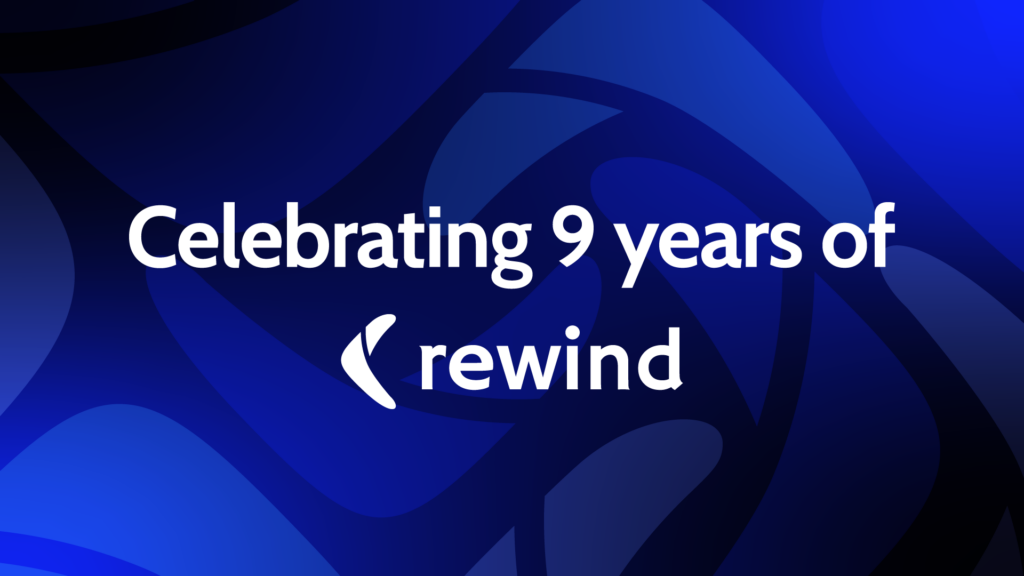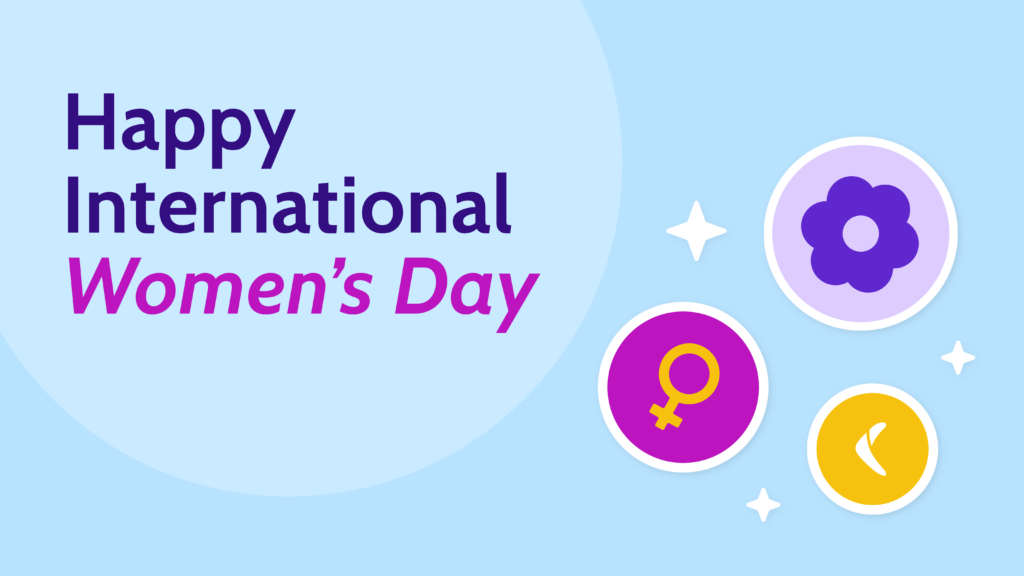In the largest tech deals of the last 5 years, there were more VC investors named James, David, and Peter than women – combined.
As a company co-founded by a ‘James’, we’re not suggesting it isn’t a wonderful name. But when a handful of names outnumber the entire female population, it’s time to acknowledge the
obvious: women are still underrepresented in STEM fields.
“In our early years, I did a poor job of prioritizing diversity in the team,” reflects James Ciesielski, Rewind CTO. “The only non-male representation came in the form of 2 co-op students in 4 years. I can easily throw out a (terrible) excuse like: ‘we were a small company; the talent pools were limited’ but I know now that that’s BS.”
Today’s Rewind is not the same company as when it was founded 6 years ago. Today, we’re no longer hiding behind lame excuses. We’re celebrating our progress, while acknowledging the work that still lies ahead. We have ambitious diversity and equity hiring goals. We support an open and accepting workplace culture, and we’re challenging ourselves to be held accountable.
“As employers, we have a responsibility to be a part of the change”, explains Rewind People Manager, Kirsi Maharaj.
Changing people’s behaviour begins with clear communication, transparent information, and a plan that will help you make the necessary adjustments.
As a data company, we love numbers. Data illuminates changes and identifies areas for growth, helping to expose concealed biases or trends. While diversity is much more than a simple calculation or percentage, numbers and objective stats are essential ways of measuring progress (and not lip service). We can’t improve if we don’t know where to start.
So we’re sharing our diversity data with you, to challenge ourselves and help us stay accountable for reaching our goals.
Where we are:
- 28% of Rewind employees identify as female.
- 13.3% of Rewind employees on the R&D team identify as female.
Where we’re going:
- Achieve 50% female representation within the company overall by 2024.
- Achieve 20% female representation on the R&D team by the end of 2021.
- Achieve 25% female representation on the R&D team by 2024.
“We still have a ways to go with gender diversity,” noted Ciesielski. “We’ve set aggressive targets for ourselves and while it will be a challenge to meet those targets, I firmly believe in the value it will bring. Not just for the benefits of the organization, but for our customers, our products, and more importantly, the profession and society as a whole.”
As a small company in a historically less-than-diverse industry, we’re no stranger to the challenges of creating an inclusive workforce. Culture isn’t created overnight, and it certainly isn’t created in a vacuum. Supporting the development of a diverse culture of varied voices and experiences is challenging. While Rewind isn’t perfect, here are some methods we’ve used to foster the creation of a diverse company culture.
Offer supports and benefits that people actually need.
Sure, ping pong tables in the office are cool. But you know what’s even cooler? Flexible health and wellness programs that benefit every employee (not just table tennis aficionados).
Instead of a traditional health care plan, consider providing your employees with alternate wellness options. “Health is about a lot more than a pair of running shoes”, adds Maharaj. “Rewinders are encouraged to use their health stipend however it would best benefit them: we don’t tell you how to take care of your own wellness”.
Another overlooked benefit is parental leave. Often, workers are forced to choose between their family and their career goals. Offering paid parental leave (to parents of any gender identity) allows everyone to achieve a healthy balance between the personal and the professional.
Identify internal biases – all of them
All humans are biased in one way or another. It’s a natural thought process, and it helps us make split second decisions when necessary. If early man didn’t have a bias against long, slithering creatures, we might not be here right now.
But when it comes to hiring in the modern era, more subtle biases can create barriers for certain groups. Most people can tell you about In Group/Out Group bias (our tendency to agree with people who are similar to us) or Confirmation bias (our tendency to seek out information that confirms what we already believe). But, there are actually dozens of identified common psychological biases that can play out during the hiring process.
Having a frank and open discussion about bias will help you learn more about your own thought processes, and how unconscious bias may be leading to unnecessary barriers. “Actively looking for bias in your hiring process can allow you to tackle it head on,” explains Jana Maximov, Talent Acquisition Specialist at Rewind. “Including diverse people in the hiring process is incredibly effective. Collaborative hiring processes also help tackle confirmation bias, as more people are involved in the process and can look for different traits.”
For those looking to reduce potential unconscious bias in their hiring process, Maximov explains “Strategies like looking at the diversity of your current workforce, checking the language of your job descriptions and where you advertise, or listening to previous interview recordings can be immensely useful. The important thing is to be honest with yourself so you can take steps towards a more inclusive and extensive hiring process.”
Make diversity a part of the conversation – all year long
International Women’s Day is a great opportunity to shine a light on the benefits of an inclusive workforce, but diversity is a strength all year long.
Foster a culture of respectful inquiry and create opportunities for employees to learn about and discuss different issues with a book club. Popular titles in the Rewind Book Club include Brotopia, Mediocre, Becoming, and others. Encourage real, frank discussions about how these concepts might play out at work, and allow employees to read and suggest books from their own backgrounds and lived experiences.
Go remote
The traditional workplace, including common hours, long commutes, and open plan offices, presented a number of barriers to many different groups of people. Parents and caregivers can find it difficult to arrange for childcare during common working hours (e.g. 9-5). People with chronic health conditions or disabilities face barriers during long commutes. Non-neurotypical individuals often struggle to be productive when working in a noisy, busy office space.
Removing all of these barriers can be achieved with one fell swoop: remote workforces working flexible hours. Allow employees the flexibility to choose their hours to best fit their life, including other demands on their time. Does it really matter if everyone in the company isn’t online from 9am to 5pm, Monday to Friday? As Rewind CEO Mike Potter puts it, “why do I care where you sit, as long as your job gets done?” Asynchronous communication, or the notion that work doesn’t happen at the same time for everybody, can improve focus, concentration, productivity, and employee satisfaction.
Not limiting your hiring efforts to a certain geographical area can also increase the number of diverse applicants. If you require employees to live in a certain area, you will only attract the type of people who want to (and can afford to) live in that city. “Going remote has very much enabled us to hire more diverse people”, added Maximov.
Not offering remote work options could also hurt your chances of landing that great candidate, as more and more companies are exploring this option. Even before COVID-19 forced many to work from home in 2020, over 5 million Americans worked from home at least half of the time. The number of remote workers has increased by 173% since 2005, and experts agree the trend is only going to continue. Don’t miss out on a talented individual simply because they’re in the wrong place at the wrong time.
The future of Rewind
The ultimate goal for Rewind? “To build a company that’s a good place to work. Where people want to work. Where I would want to work”, explains Potter.
“The small changes we’ve been making are starting to add up. I’m excited to update this article regularly as we continue to grow and challenge ourselves”.
PSST: Looking for a change? Check out our Open Positions.



